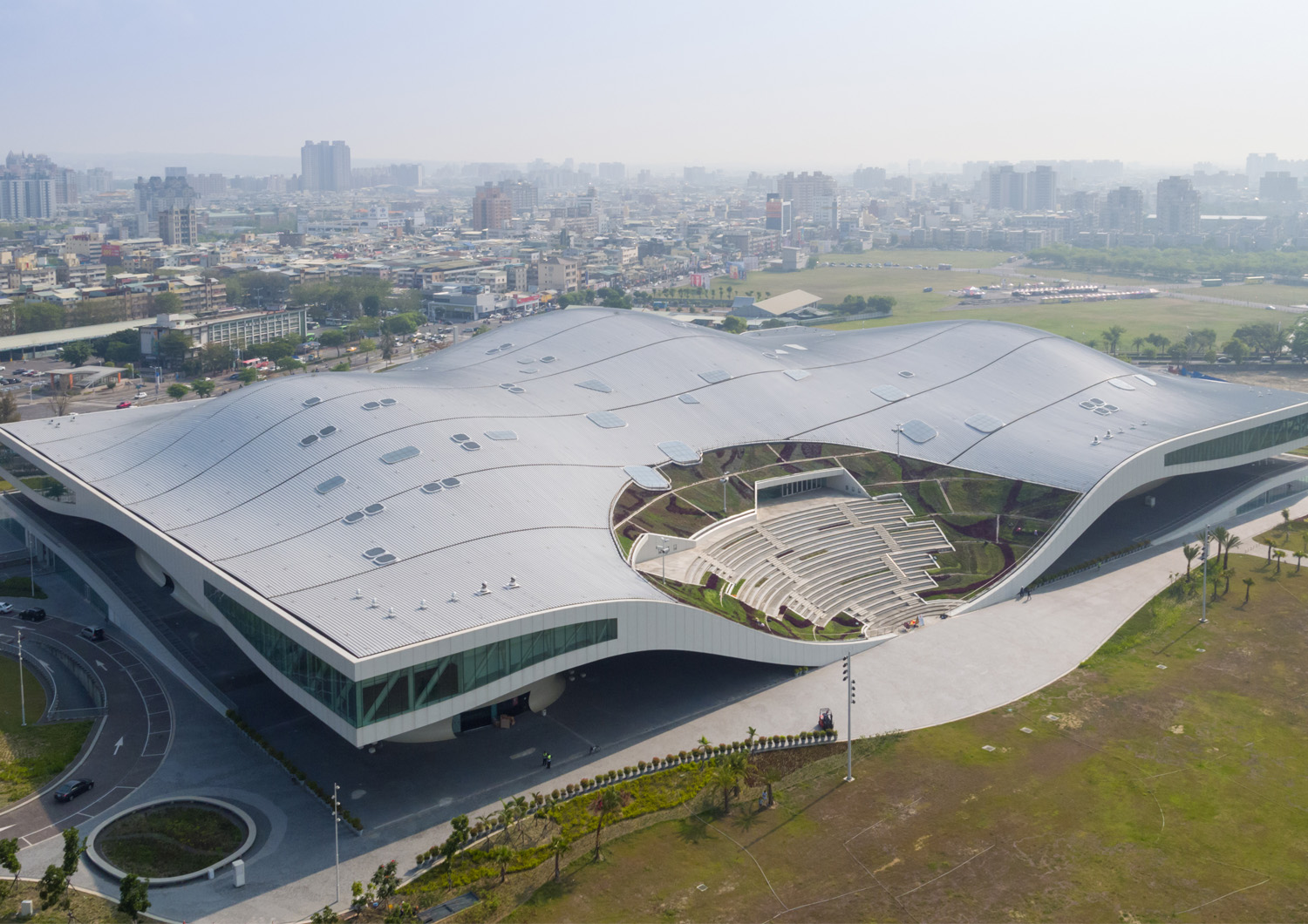A Spaceship has landed in Taiwan, The National Kaohsiung Center for the Arts

The National Kaohsiung Centre for the Arts symbolizes the transformation of Kaohsiung, once a major international harbour, into a modern, diverse city with a rich cultural climate. Mecanoo designed the National Kaohsiung Centre for the Arts, located on a former military terrain, as an integral part of the adjacent subtropical park to have a positive social impact on the residents of Kaohsiung whose population counts almost 3 million.
Image: The National Kaohsiung Centre for the Arts
The National Kaohsiung Centre for the Arts symbolizes the transformation of Kaohsiung, once a major international harbour, into a modern, diverse city with a rich cultural climate. Mecanoo designed the National Kaohsiung Centre for the Arts, located on a former military terrain, as an integral part of the adjacent subtropical park to have a positive social impact on the residents of Kaohsiung whose population counts almost 3 million.
 The National Kaohsiung Centre for the Arts
The National Kaohsiung Centre for the Arts
Inspired by the local Banyan trees with their iconic crowns, the vast, undulating structure is composed of a skin and roof, and connects an extensive range of functions. The curved steel structure was built in cooperation between a local and a Dutch shipbuilder. Underneath this roof is Banyan Plaza, a generous, sheltered public space. Residents can wander through here day and night, practice Tai Chi or stage street performances along walkways and in informal spaces.
 The form of the banyan trees reflects the local climate. It's wide crown, providing shelter against sun and rain, is a perfect expression of Kaohsiung's humid atmosphere. The open, protective shape of the banyan tree becomes a springboard for the design. Its expansive sheltered crown becomes the Banyan Plaza
The form of the banyan trees reflects the local climate. It's wide crown, providing shelter against sun and rain, is a perfect expression of Kaohsiung's humid atmosphere. The open, protective shape of the banyan tree becomes a springboard for the design. Its expansive sheltered crown becomes the Banyan Plaza
 Image copyright by Iwan Baan
Image copyright by Iwan Baan
The Banyan Plaza, a partially enclosed public space where the cooling wind can freely flow. Between the four formal performance halls, which form the ‘trunks’ that support the undulating roof, a topography rising from ground level to plus five metres becomes part of the park’s landscape.
An open-air theatre nestles on the roof where the structure curves to the ground, with the surrounding park forming the stage. Designed with the subtropical climate in mind, the open structure allows the wind to blow freely through Banyan Plaza.
 Image copyright by Iwan Baan
Image copyright by Iwan Baan
The 1981-seat Concert Hall is shaped like a stepped vineyard with a stage at its centre, with terraces at different floor heights encircle the podium. With seating on all sides of the stage, the audience is in close proximity to the performance itself. The public enters the oak-lined from the ground floor and spiraling ramps lead them to their golden seats.
The seamless flow between interior and exterior creates opportunities for crossovers between formal and informal performances.
Different theatres such as the 1981-seat Concert Hall and 2236-seat Opera House are located in the five cores or ‘legs’ of the building where the structure meets the ground. The cores connect with one another via foyers in the roof and an underground service floor which houses the backstage area of each theatre.
